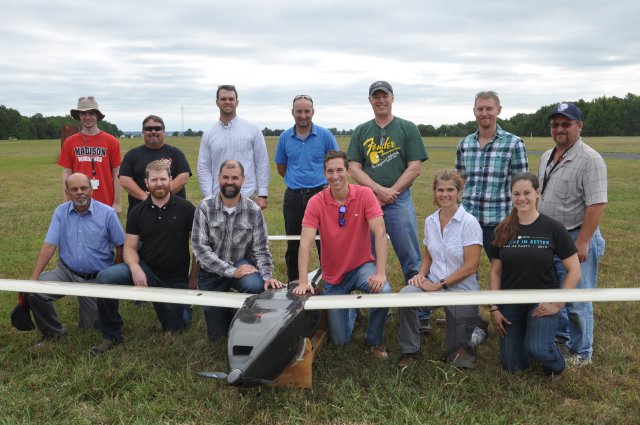 Researchers from the U.S. Naval Research Laboratory’s chemistry and tactical electronic warfare divisions completed the first flight of the Ion Tiger unmanned air vehicle with a new hydrogen-powered fuel cell built in-house.
Researchers from the U.S. Naval Research Laboratory’s chemistry and tactical electronic warfare divisions completed the first flight of the Ion Tiger unmanned air vehicle with a new hydrogen-powered fuel cell built in-house.
The NRL team designed and built a custom fuel cell system capable of up to 5,000 watts, using formed metal-foil bipolar plates, which saved space and weight. Ion Tiger flew with the new cell in September.
“The decision to move to metal bipolar plates allowed us to leverage a lot of know how from the automotive industry’s large investment in hydrogen fuel cells” said Dr. Benjamin Gould, NRL’s chief scientist on the project. “Using the plates also enabled enhanced storage capabilities and weight savings that are critical for naval unmanned system applications.”
The bipolar plates, held together with titanium straps, serve as the structural backbone of the fuel cell system, providing fluidic pathways for air, hydrogen, and coolant along with electronic pathways for conduction between the individual cells.
NRL also contributed a custom microcontroller and lightweight air compressor. Gas and coolant flow fields were designed and validated with NRL’s own computational fluid design suite.
“NRL having the know how to build their own fuel cells in house gives ONR and the U.S. Navy the understanding and tools needed for transitioning fuel cells to the fleet,” said Michele Anderson, program manager at the Office of Naval Research.
Creating components at NRL allows for low-cost modular systems for both prototype development of naval unmanned vehicles and scalability to a range of sizes.
Photo: Members of the chemistry and tactical electronic warfare divisions from the U.S. Naval Research Laboratory with the Ion Tiger unmanned air vehicle
About the U.S. Naval Research Laboratory
The U.S. Naval Research Laboratory provides the advanced scientific capabilities required to bolster our country’s position of global naval leadership. The Laboratory, with a total complement of approximately 2,500 personnel, is located in southwest Washington, D.C., with other major sites at the Stennis Space Center, Miss., and Monterey, Calif. NRL has served the Navy and the nation for over 90 years and continues to advance research further than you can imagine.
Source: Press Release
